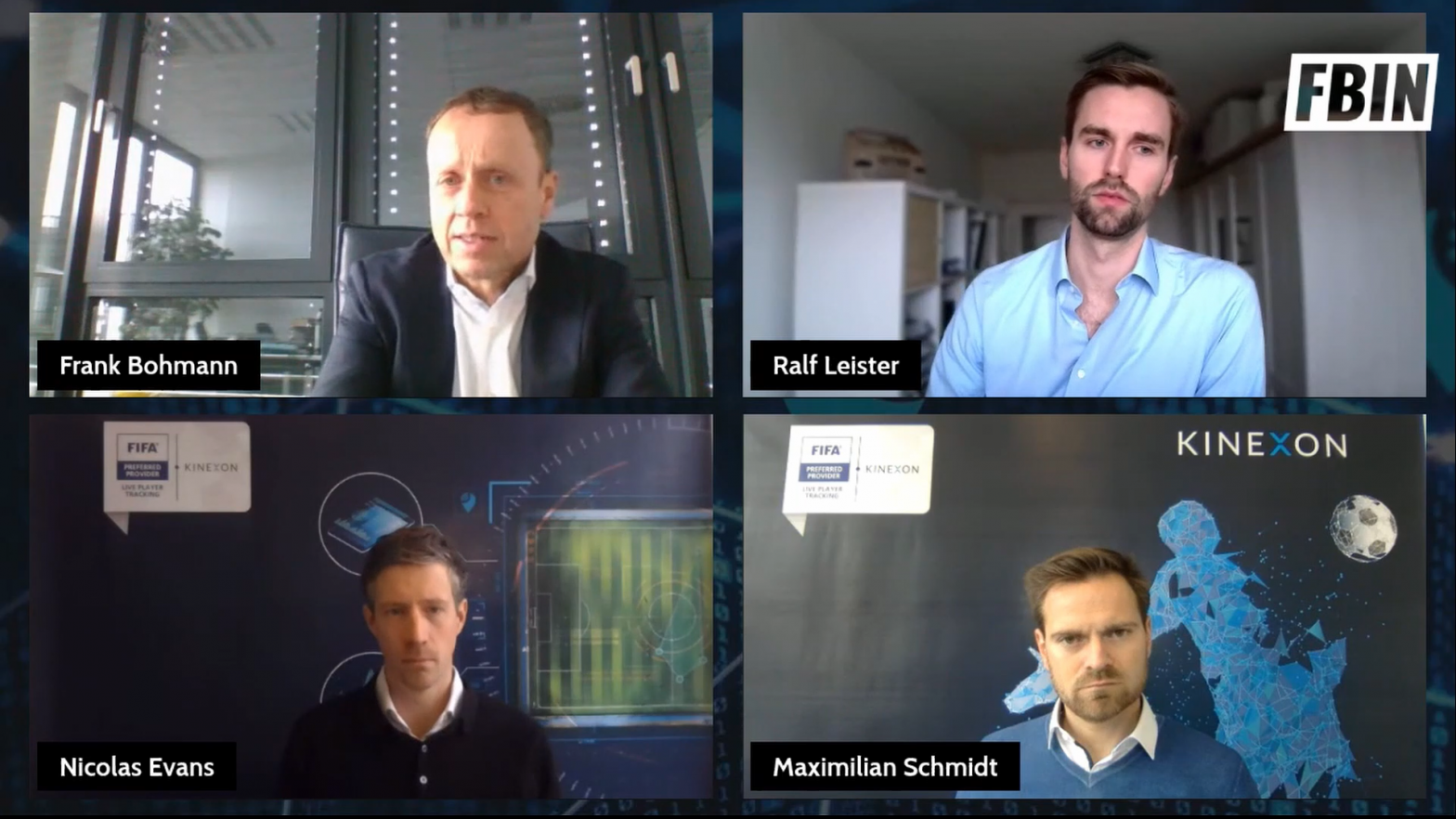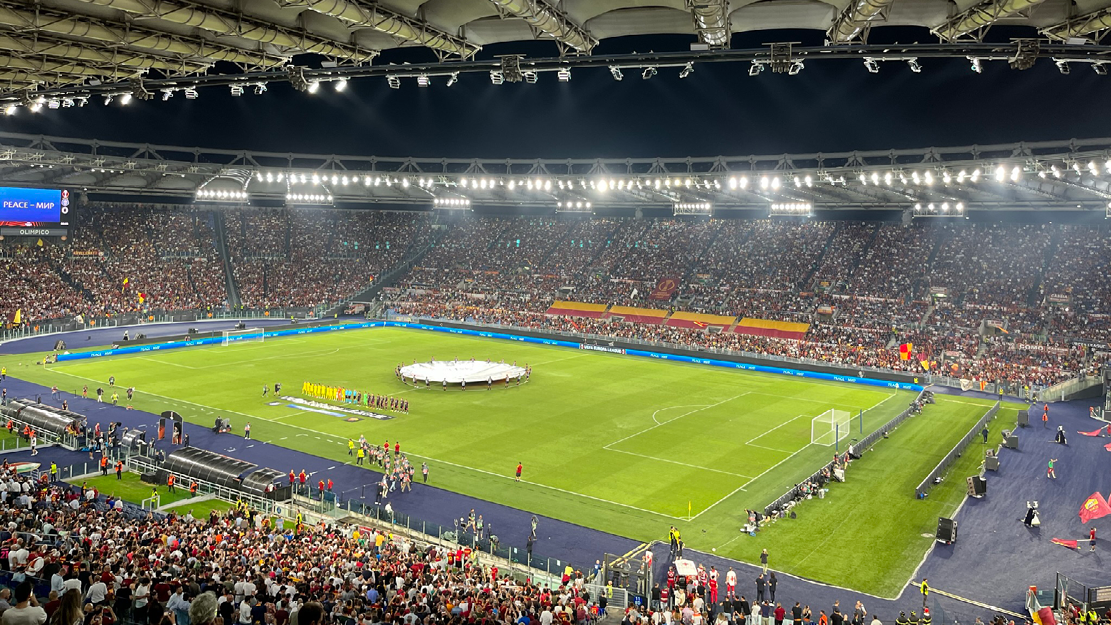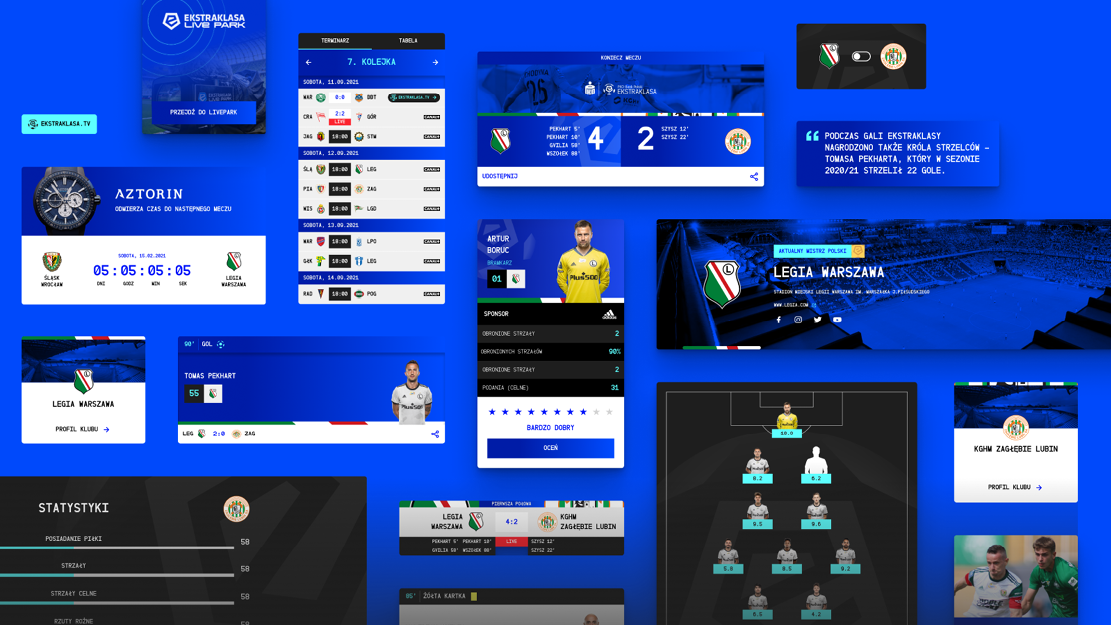On 18 January, we hosted our digital deep dive about the potential of live data in sports with three experts in the field, including Maximilian Schmidt, Managing Director of Kinexon Sports and Media, Nicolas Evans, Head of Football Research & Standards at FIFA and Frank Bohmann, Managing Director of the German Handball Bundesliga. This article will provide the key takeaways from the expert’s keynotes.
THE BREAKTHROUGH OF LIVE-DATA TRACKING AT KINEXON
Maximilian Schmidt, Kinexon
Kinexon’s recent milestones
When Kinexon co-founders Oliver and Alexander visited the Allianz Arena in Munich ten years ago, they saw how technology could enhance the football fan experience. Collecting data back then was difficult due to manual processes and heavy infrastructure. More importantly, live data was unaware. This led Kinexon’s team to build their vision of a future where live tracking is more accessible, low-cost, and available to a wide range of sports.
(2015) – Launch of the first live player tracking
Kinexon marked its first milestone by launching the first live player-tracking solution and partnered with FC Augsburg. Though the solution captured 100% live and real-time on-pitch data, it took a long time to educate practitioners on how to use real-time data effectively, and the infrastructure was far less optimized than it is today.
(2016) – Breakthrough in U.S sports
In 2016, Kinexon’s team decided to expand into the US’s market, owing to the NBA’s immense interest in live data applications. The NBA has a brutal schedule of 82 regular games each season, a high rate of injury, and a significant demand for live data analysis during practice and live matches. Their turning point came three years later when roughly 75% of the NBA teams reached out for Kinexon’s live-data applications. Today, 80% of NBA organizations use Kinexon’s technology on a daily basis.
(2018) – Premiere of ball tracking
During their development, there was one thing Maximilian and his team always thought was missing, which was how to track the ball live. In 2018, Kinexon partnered with Derby Star/Select – the official match ball provider of the German Bundesliga, to manufacture the first-connected ball allowing teams to measure the team’s performance on a context-specific level.
(2019) – First league-wide use case of live player and ball tracking
Kinexon reached another significant milestone in 2019 when it partnered with the Liqui Moly Handball Bundesliga to bring the sport to the next level. This is because, for the first time, not only individual teams but also the whole league applied for Kinexon’s technology.
(2021) – The fusion of technologies and data sources
Looking at the present, Maximilian believes that the recent trends can improve Kinexon’s partners’ on-pitch performance and harness the power of data to leverage fan experiences. The recent tremendous growth in cloud computing and data transmission, such as of 5G technology, has also enabled Kinexon to develop its product portfolio further, from formerly immobile, local systems to real-time data accessible wherever you are in the world.
The untapped opportunities of live-data
Maximilian pointed out three untapped opportunities for live data, including fan engagement, tactical data analysis, and data democratization. Maximilian explained that we now only see the tip of the iceberg regarding fan engagement because there are unlimited ways to apply storytelling and personalization for the fans. Second, regarding tactical data analysis, the current challenge is that more data translators are needed as data insights usually come in technical terms, and only a few experts can understand. Thus, Kinexon aims to design more intuitive and user-friendly software applications that can provide on-point answers for the coaches or players in the most straightforward manner. Finally, regarding data democratization, less than 10% of Kinexon’s customers are women or youth sports. It is Kinexon’s responsibility to develop its technology available to a broader range of users.
“We are honored to be FIFA’s preferred provider for live player tracking, but it’s also a great responsibility for us to continue our way as a pioneer and a thought leader to develop sports to the next level and powered by technology. For us, technology is ready; now we have to take advantage of it” – Maximilian Schmidt.
THE FUTURE OF FOOTBALL FROM A TECHNOLOGICAL PERSPECTIVE
Nicolas Evans, FIFA
Why and what are we trying to achieve with technology?
Nicolas began his keynote speech with a question: “Why do we want technology?”. To answer this question, he pointed out FIFA’s framework to navigate technology include some key points below:
- Needs to solve an actual problem
- Enhance the game or game experience
- Can help futureproof processes
- Should not answer questions no one needs or wants
- It is not a stand-alone solution to everything
One of the biggest issues is a huge market push to sell technology and insights. Technology should never be a solution to anything. It is used to increase intelligence, from business intelligence to artificial intelligence. For example, regarding business intelligence, various technological applications range from training planning, pre-match decision, medical or officiating support (VAR), talent scouting, and even fan preferences. However, technology and data alone won’t solve any problems without context or translatability. Nicolas referred to this as the “white elephant” risk, where many teams adopt expensive technologies without thoroughly understanding what they need.
The Applications Of Live Data
Nicolas summed up live data applications in 5 areas, including video, audio, wearables data, IoT, and others. At the moment, there are approximately 4 million data points in front of us for a 90-minute match. First, for teams, live data directly impacts individual and team performance. FIFA surveyed many technical directors, and there is a firm belief in the need for technology; otherwise, it would become a competitive disadvantage. Next, wearable and optical technology have been improving rapidly, and many of them have been tested and approved by FIFA.
“I do believe that it won’t be too long before you can say it’s not the technology that will win the trophies, but it’s going to be very hard to win trophies without technology and data” – Nicolas Evans.
Nicolas also mentioned some key official use of live data such as refereeing support, quantification of performances, better official stats, and match data.
For example, as a governing body, FIFA manages the refereeing role for the largest tournaments worldwide. In fact, technology has been a huge support for refereeing during the game. The example of VAR with limb tracking helps refereeing decisions be more precise. Another example is that with technology, it’s easier to quantify data performances, like Man of the Match, which can easily be used for media and fan engagement. We probably don’t actually know what we want, but once the fans decide that something is cool enough and willing to pay for it, we can implement it ultimately.
What Is The Next Big Thing In Football?
For FIFA and Nicolas, the answer to this question is relatively simple. The next big thing doesn’t necessarily need to be seeing robot players or flying drones but rather just solving real problems or as simple as lowering costs. It is again to understand our why and understand our questions thoroughly. To conclude, the next big technology should solve an actual problem, lower operation cost, increase quality and improve the game experience.
THE POTENTIAL OF LIVE DATA FOR THE LIQUI MOLY HANDBALL BUNDESLIGA, ITS CLUBS, PARTNERS, BROADCASTERS & FANS
Frank Bohmann, Liqui Moly HBL
Overview Of Liqui Moly Handball Bundesliga (HBL)
With the motto of being the strongest handball league globally, Liqui Moly HBL currently has 18 clubs throughout Germany and is broadcasted in more than 30 countries. The league has a long history of success, with 24 EHF-Cup champions and 20 EHF Champion League winners. Normally, there would be around 1.5 million audiences in the area per season. According to a report from Nielsen Sports, 49,05 million people showed interest in handball, of which 16,7 million of them showed “strong” or “very strong” interest. Interestingly, 44% of the target audience is in the age group from 40 – to 59-year-old with a high level of education and generally high income.
HBL Sportdata Management Journey
The league started collecting data digitally in 2005/2006 but only with basic categories such as results, goals, yellow and red cards, penalties, or visitors. Interestingly, this process was the extension of the previous data management legacy, which was started and manually developed in 1966. Since 2015/2016, the league formed its collaboration with Sportradar and added scouting data and a range of more complex actions like saves, assists, turnover blocks, missed shots, and so on. In 2019, they closed their tender for live-tracking technology with Kinexon. After 1000 matches, the league had only one half-time where they missed the data as somebody forgot to load up the battery. The technology has been extremely stable and highly accepted by both staff and players.
Ballsensoric, Wearables, Venue Equipment and their Added Values
Since this season, every ball in the league has a sensor inside while remaining the ball’s perfect standard and quality that even a player won’t recognize. For wearables technology, it is also highly accepted by the players even though there were some doubts if it is safe enough. We place other equipment such as a sensor receiver around the arena to connect to the players’ sensors. The only challenge is that they have to find enough electricians to install them. Luckily, we received lots of support from Kinexon.
The HBL has brought handball to a new level with real-time tracking technology. Not only do they gain a better understanding of the sport itself, but they also raise new revenue potential for both the league and the clubs or strengthen partnerships with sponsors. More importantly, live data can provide insights for sportive decision-makers, whether to identify talents, improve tactics or analyze components.






